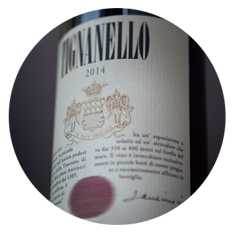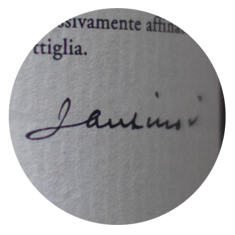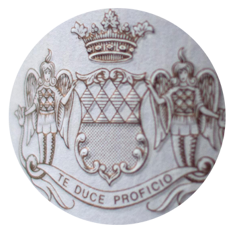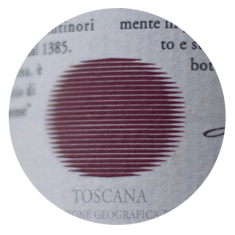Tignanello 2009
Climate
The season in the Chianti Classico production zone was characterized by a cold and rainy winter, with rainfalls guaranteeing a good supply of water for the following spring and summer, initially mild in temperature. As a consequence the budding of the vines, was quite regular and well within seasonal averages for the period. Both flowering and bud break were regular, even though the rains had a certain influence on the size of the berries and bunches which, in early summer, were ahead of their normal ripening schedule. The vines continued to vegetate in a notable way during the summer, with a month of August and an initial ten day period in September which were significantly warm and dry. The second half of September and early October were very favorable both in terms of daily sunlight and with significant temperature excursions from daytime and nighttime very beneficial for the balance of the wine and richness of aromatic compounds. Both Sangiovese and Cabernet needed many days to complete their maturation, to first fifteen days of October. The quality of the harvested crop brought to the winery was of very high quality indeed, both in terms of the healthiness of the grapes and, above all, of their quality, raising expectation of a vintage of true excellence. Total annual rainfall: 74 centimeters (29.5 inches) Total rainfall April 1st – October 31st: 29 centimeters (11.5 inches) Average daily temperatures April 1st – October 31st: 21.7 °centigrade (71° Fahrenheit)
Vinification
Vineyards underwent crop thinning and bunch selection during the growing season and the grapes were picked entirely by hand depending on the various parcels. The first grape variety to fully ripen was the Cabernet Franc, picked between September 27th and September 29th. In October Sangiovese harvest began and lasted for a total of twelve days. The Cabernet Sauvignon grapes, harvested between October 10th and October 14th were the last to be picked. Once in the cellars, the grapes were delicately destemmed and the individual berries selected on the sorting table; to insure that berries which were not completely ripe, a rarity in this vintage, were removed and only those which were fully ripe went into the fermenting tanks. During the fermentation and maceration in the conical fermenters the must was slowly transformed into wine, with maximum focus on trying to obtain freshness of aromas, extraction of color, and a handling of the tannins aimed to suppleness and finesse. These operations required great sensitivity and experience, particularly during the moment when the wine was ready to be run off it skins, a decision taken only after meticulous and constant tasting. Once the wine was separated from its skins it was put through a complete malolactic fermentation in small oak barrels. The aging then began in French and Hungarian oak barrels and lasted for approximately 16-18 months; during which time the various lots of wine, each fermented separately on the basis of their individual grape varieties and the characteristics of vineyard plot and cultivation practices, remained in barrel. The lots were then assembled a few months before bottling.
Tasting Notes
A very intense ruby red in color with purple highlights, the wine is immediately and suavely convincing in its aromas and harmonious in its expression of the characteristics of Chianti Classico as a zone. The nose is redolent of licorice, violets, and cherries under spirits together with notes of vanilla, chocolate, and sweet toasty oak, all of excellent intensity and sweet elegance. Fresh and savory flavors on the persistent finish and aftertaste add length and a convincing finesse.
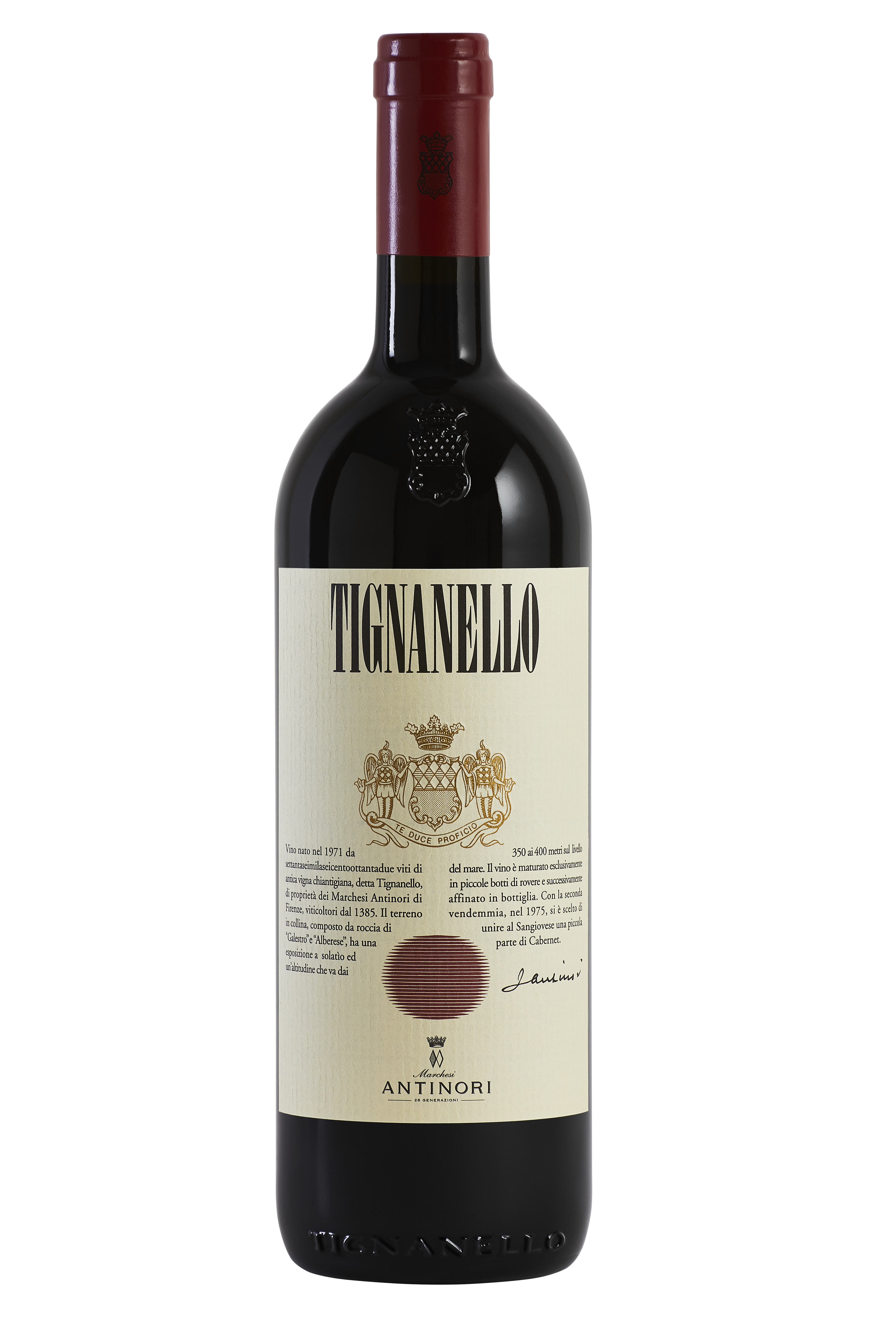
The Wine
Tignanello was the first Sangiovese to be aged in barriques, the first contemporary red wine blended with untraditional varieties (specifically Cabernet) and one of the first red wines in the Chianti Classico region that didn’t use white grapes. Tignanello is a milestone. It’s produced with a selection of Sangiovese, Cabernet Sauvignon and Cabernet Franc.

The Design
The label was designed by Silvio Coppola in 1974 for the release of Tignanello 1971. The idea to commission this artist was discussed at an event at Castello della Sala in 1973. Silvio Coppola was an important Italian graphic and interior designer who was famous for his minimalist lighting fixtures and austere furniture but also for book cover designs for Italian publishing company Feltrinelli. Silvio Coppola was the perfect match for the job.
The Signature
Marchese Piero Antinori, the current Honorary President, decided to have his father, Niccolò Antinori, sign the label as a sign of recognition for his father’s confidence in him.
Te Duce Proficio
The historic family crest of the Antinori family
The Sun
Tignanello’s stylized “Sun” by Silvio Coppola
Climate
The 2021 vintage from Chianti Classico will be remembered for a long slow-paced season: a vintage that promises power and finesse. Temperatures during the winter months were not excessively cold and were accompanied by rain showers that lasted up until the end of March. The beginning of spring triggered early bud break, but cool, dry weather in April slowed down the vines’ vegetative cycle. May and June followed normal weather patterns, not too hot, with scattered precipitation that guaranteed excellent flowering and fruit set of all grape varieties in Tenuta Tignanello’s vineyards. Overall, summer was hot and dry, especially during August but towards the end of the month, occasional rainfall provided ideal conditions for the vines to begin the ripening phase. September and October were picture perfect: sunny skies, no heat spikes, refreshing breezes and cool nighttime temperatures that allowed the grapes to gradually progress to peak ripeness. Overall, the 2021 vintage is considered to be one of the best vintages ever. Harvesting operations began during the last half of September for Sangiovese and were completed October 20th with Cabernet.
Vinification
This growing season’s climate trends challenged us to be focused and diligent both in the vineyards during harvesting activities and when grapes were brought to the cellar where sorting operations and initial winemaking processes were essential to achieve optimal results. During fermentation in truncated conical tanks, each individual must was macerated on the skins giving particular emphasis to preserving aromas, extracting color, and encouraging desirable tannins that were supple and elegant. Racking was performed after rigorous daily sampling and tasting. Once separated from the skins, the wine was transferred into small oak barrels where it underwent malolactic fermentation to accentuate aromatic finesse and complexity. Aging took place in French oak barrels and a small percentage in Hungarian oak, predominantly new barrels, for a total period of approximately 15 months: after an initial period of aging the lots separately, they were blended then completed barrel aging. Tignanello, crafted mainly with Sangiovese and a small percentage of Cabernet Sauvignon and Cabernet Franc, underwent an additional 12-month period of aging in the bottle before being released.
Historical Data
Tignanello is produced exclusively from the vineyard of the same name, a parcel of some 140 acres (57 hectares) with limestone-rich soils and a southwestern exposure at 1150-1325 feets (350-400 meters) above sea level at the Tignanello estate. It was the first Sangiovese wine to be aged in small oak barrels, the first modern red wine to use such non-traditional varieties as Cabernet in the blend, and among the first red wines from the Chianti Classico area to be produced without white grapes. The wine, originally called "Chianti Classico Riserva Vigneto Tignanello" (a Chianti Classico Riserva from the Tignanello vineyard), was produced for the first time from a single vineyard parcel in 1970, when the blend contained 20% of Canaiolo and 5% of Trebbiano and Malvasia, both white grapes, and the wine aged in small oak barrels. In 1971 it became a Tuscan red table wine rather than a Chianti Classico, and was called Tignanello. In the 1975 vintage the percentage of white grapes was definitively eliminated from the blend. Ever since 1982, the blend has been the one currently used. Tignanello is bottled only in favorable vintages, and was not produced in 1972, 1973,1974, 1976, 1984, 1992, and 2002.
Tasting Notes
Tignanello 2021 is ruby red with intense purple hues. The nose is complex: notes of ripe plums, blackberries and candied orange peels lead to pleasant hints of dark chocolate, caramel, and licorice. Sweet hints of tobacco complete the impressive bouquet. The palate is rich, sophisticated, intense and is defined by supple vibrant tannins followed by a long persistent finish.
Awards
Vinous 98/100
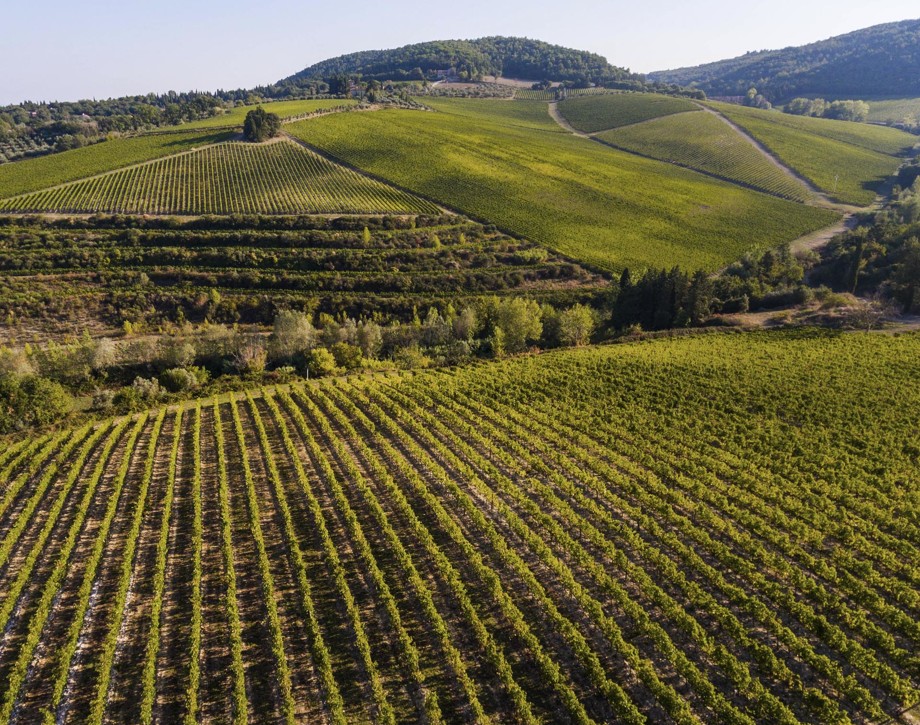
Tenuta Tignanello
The Tenuta Tignanello estate is in the heart of Chianti Classico, in the gently rolling hillsides between the Greve and Pesa river valleys. It extends over an area of 319 hectares (788 acres), of which about 130 (321 acres) are dedicated to vines. Two of the estate’s prized vineyards are on the same hillside, Tignanello and Solaia, on soils that originated from marine marlstone from the Pliocene period rich in limestone and schist. The vines enjoy hot temperatures during the day and cooler evenings throughout the growing season. The estate’s two signature wines, Solaia and Tignanello, are produced from these vineyards and have been defined by the international press as “among the most influential wines in the history of Italian viticulture”. According to Marchesi Antinori, Solaia and Tignanello are an ongoing challenge and a never-ending passion. The Tignanello estate has vineyards of indigenous Sangiovese grapes as well as some other untraditional varieties such as Cabernet Franc.
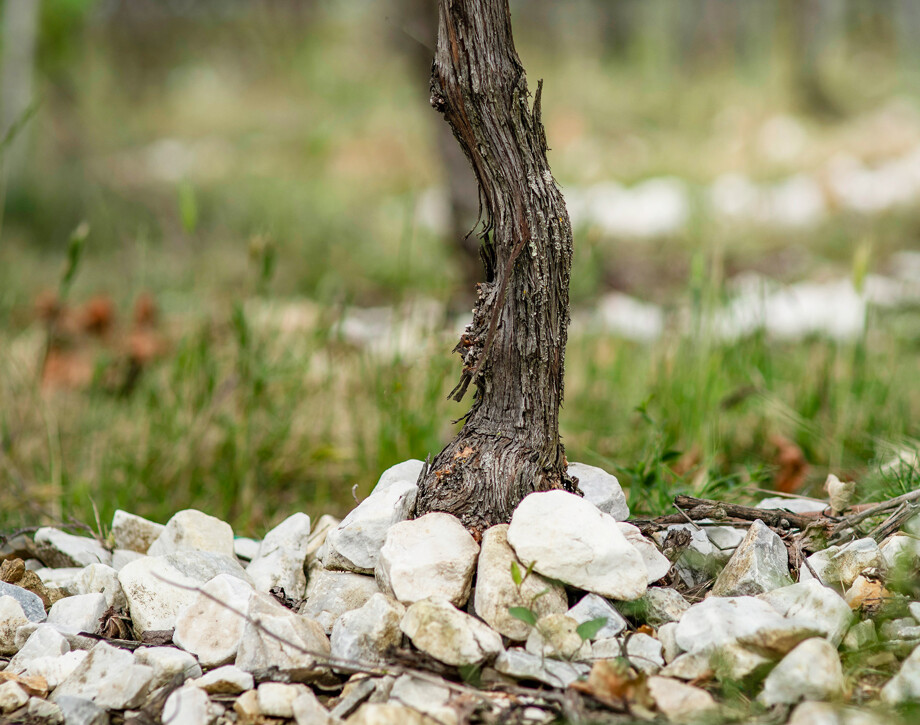
Soil
Calcareous rocky soils with alberese (marl limestone) and marl.
